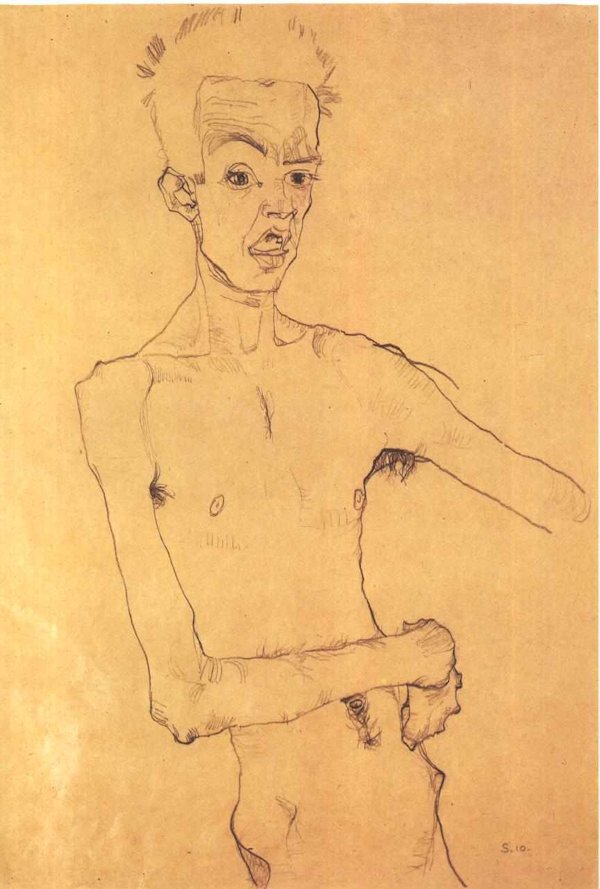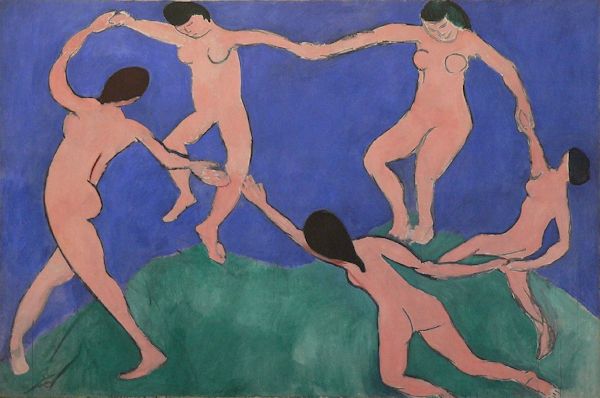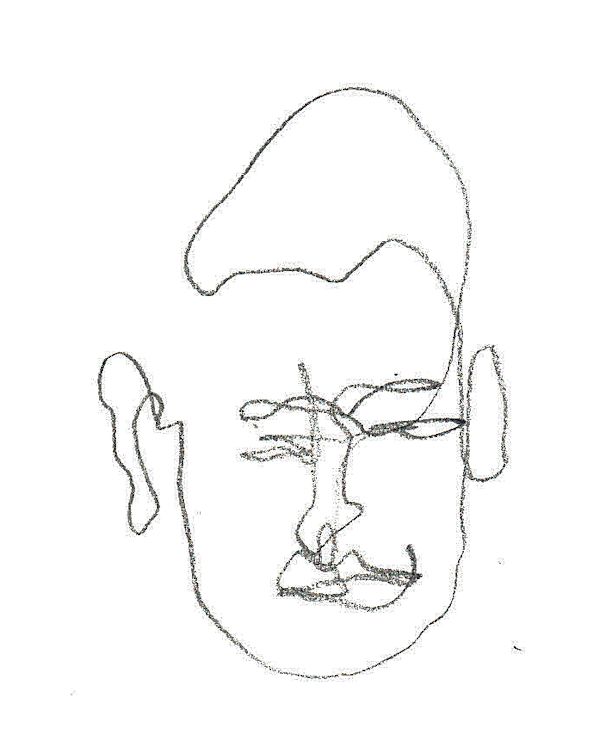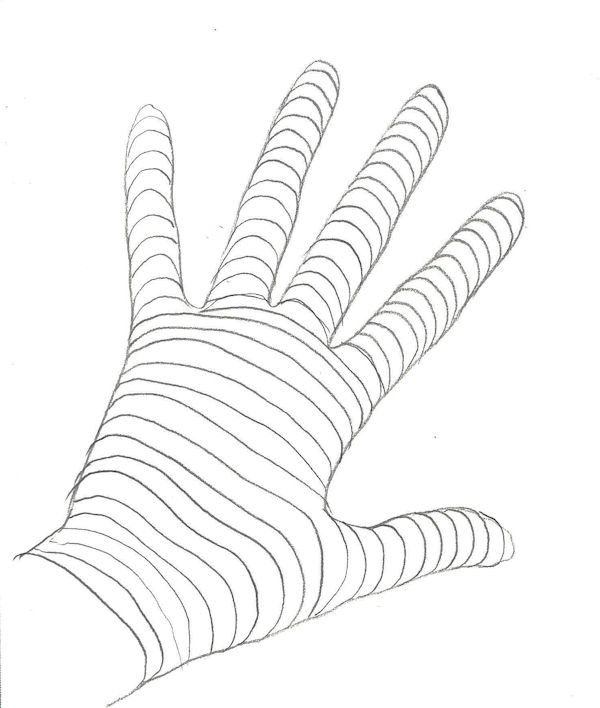In French, the word contour means “outline.” Contour drawing is exactly that, an art technique that consists of drawing the outline of a subject. It’s very easy to practice contour drawing at home. All you need is a blank piece of paper, a pencil and a subject, which can be anything from an inanimate object, like a plant or a shoe, to your hand or foot, or a even a figure model.

Egon Schiele’s Self Portrait (1910)
Contour drawing can be one of the first steps in creating a painting, but on its own, contour drawing can be a simple, elegant and expressive art form. Almost like handwriting, every artist who practices contour drawing for a long time will develop his or her own unique style. Austrian painter Egon Schiele, whose self-portrait is seen above, is known for creating contour line drawings that are a bit twisted and very expressive. Below you can see how figures in Henri Matisse’s paintings were also strongly influenced by contour line drawing.

Henri Matisse’s La danse (first version)
How to make a contour drawing?
To make a contour drawing, you have to focus on edges, but that doesn’t mean that you can’t draw anything else other than the outline. Edges can also be found inside the subject in changes of color, shades, folds and details. For example the finger creases can be seen as edges and drawn in a hand contour drawing.
The line describing the contour can show variations to make it more expressive. It can also vary in weight and darkness to make the contour drawing more interesting. You’ll notice such variations in the Egon Schiele self-portrait above.
What are some different types of contour drawing?
1. Continuous line drawing
Continuous line drawing is a special kind of line drawing where the pencil stays on the paper from the beginning of the drawing to the end. This exercise forces you to draw lines in places you wouldn’t have otherwise. This adds an interesting almost abstract effect to continuous line drawing.

Example of a simple blind continuous line drawing by Sandrine Pelissier
2. Blind continuous line drawing
Another type of line drawing is blind line drawing. This is an exercise that can feel rather counter-intuitive, as the artist is drawing the outline of a subject without looking at the paper. Blind line drawing takes the pressure off of making a good drawing since you know the result will probably look silly, but that’s what makes it fun! Focus is on the process, not the result. This is also a very good exercise to improve your eye-hand coordination.
Blind line drawing will also train you to spend more time looking at your subject than looking at the paper, which is always a good thing since many artists tend to draw what we think we see and not what we really see. There’s a natural tendency to look too much at the drawing on the paper and not enough at the subject. Blind line drawing also helps you to focus on the details since it forces you to work more slowly and spend more time observing the subject. If practiced regularly, you will start to see improvement in your blind line drawings.
 Simple hand cross-contour drawing by Sandrine Pelissier
Simple hand cross-contour drawing by Sandrine Pelissier
3. Cross-contour drawing
In cross-contour drawings, there are lines inside the object that suggest the 3-dimensional topography of the subject. Start by a regular contour drawing, drawing the outline of the subject, then trace lines inside the subject to suggest its form. A sphere would be described with circular marks a bit like the longitude and latitude marks. Wire sculptures actually often look like cross contour drawings.
Learn how to create an accurate outline for any figure in the FREE mini-class Figure Drawing Atelier with Patricia Watwood.
You might also enjoy our figure drawing tips and our graphite drawing tips.

Share tips, start a discussion or ask one of our experts or other students a question.
No Responses to “Graphite Drawing Techniques: Contour Drawing”